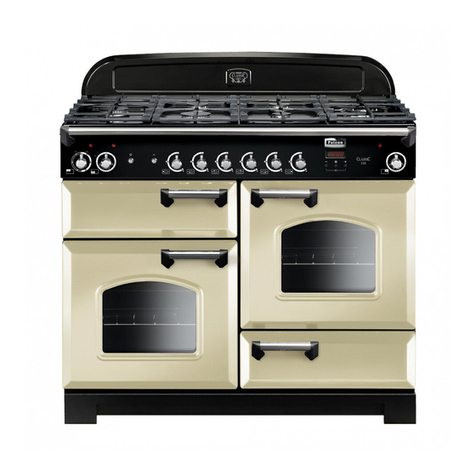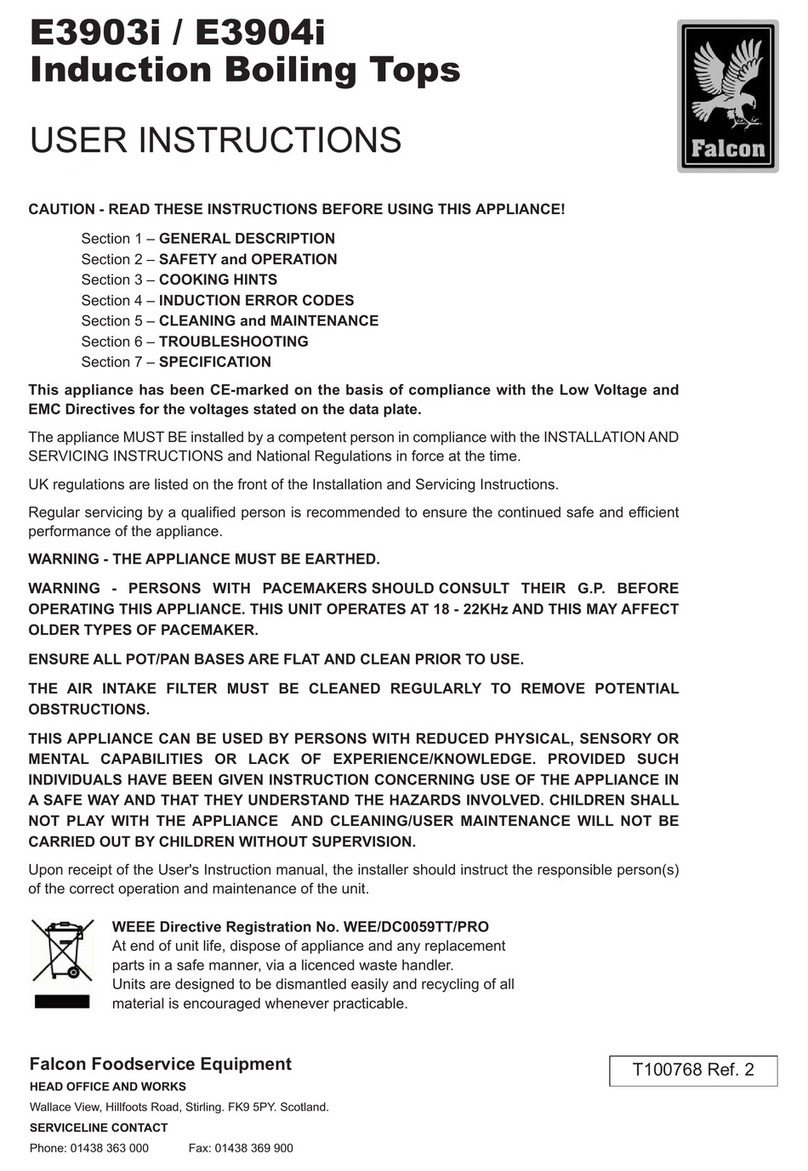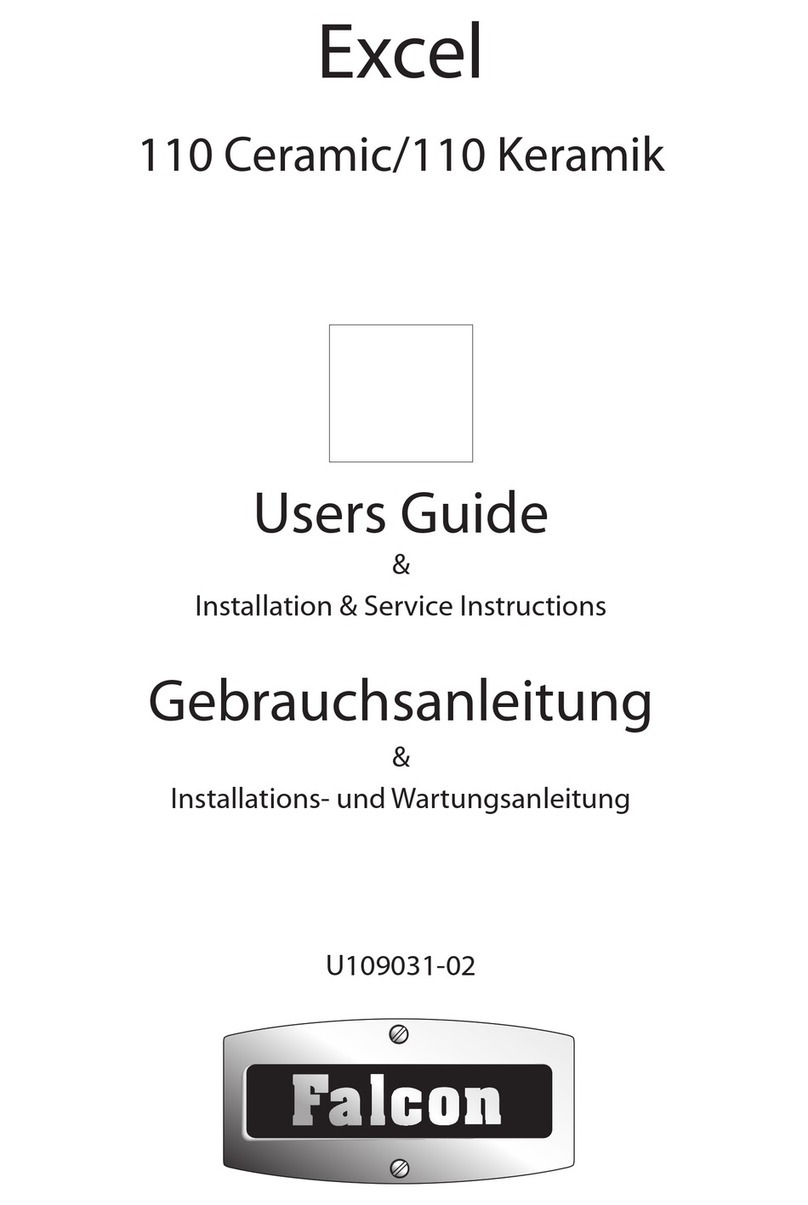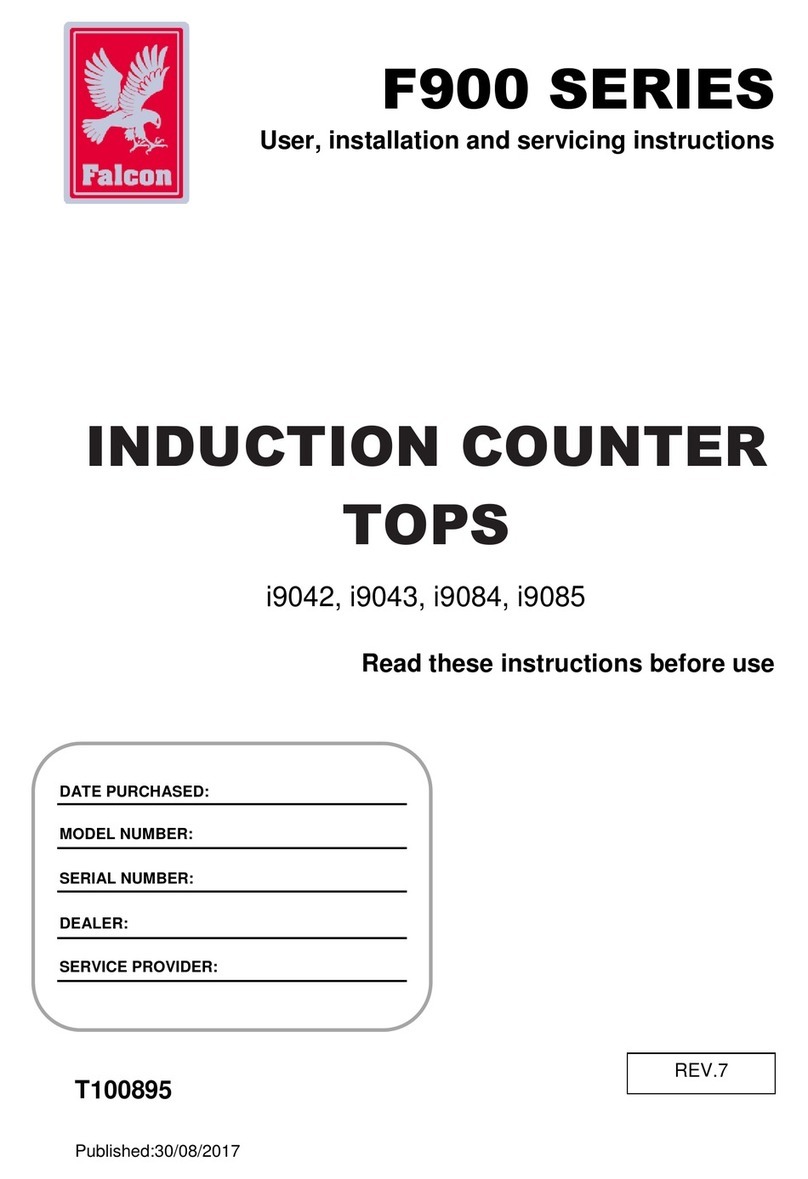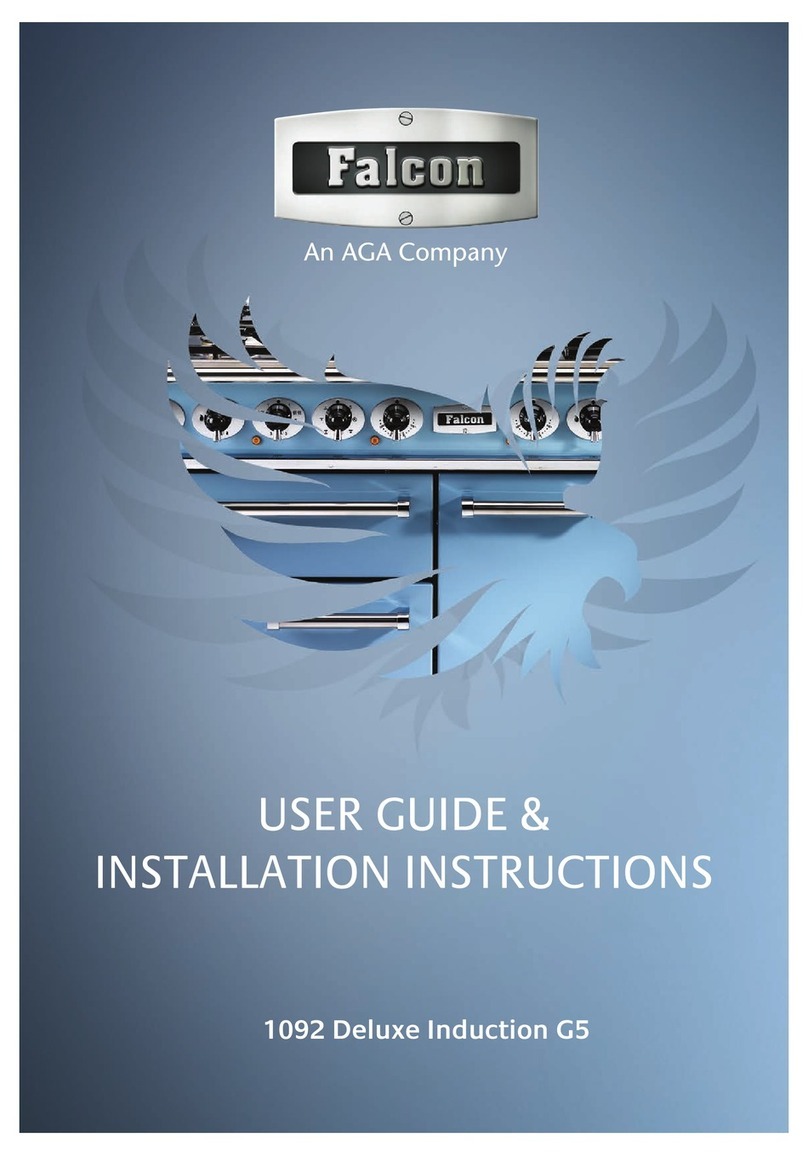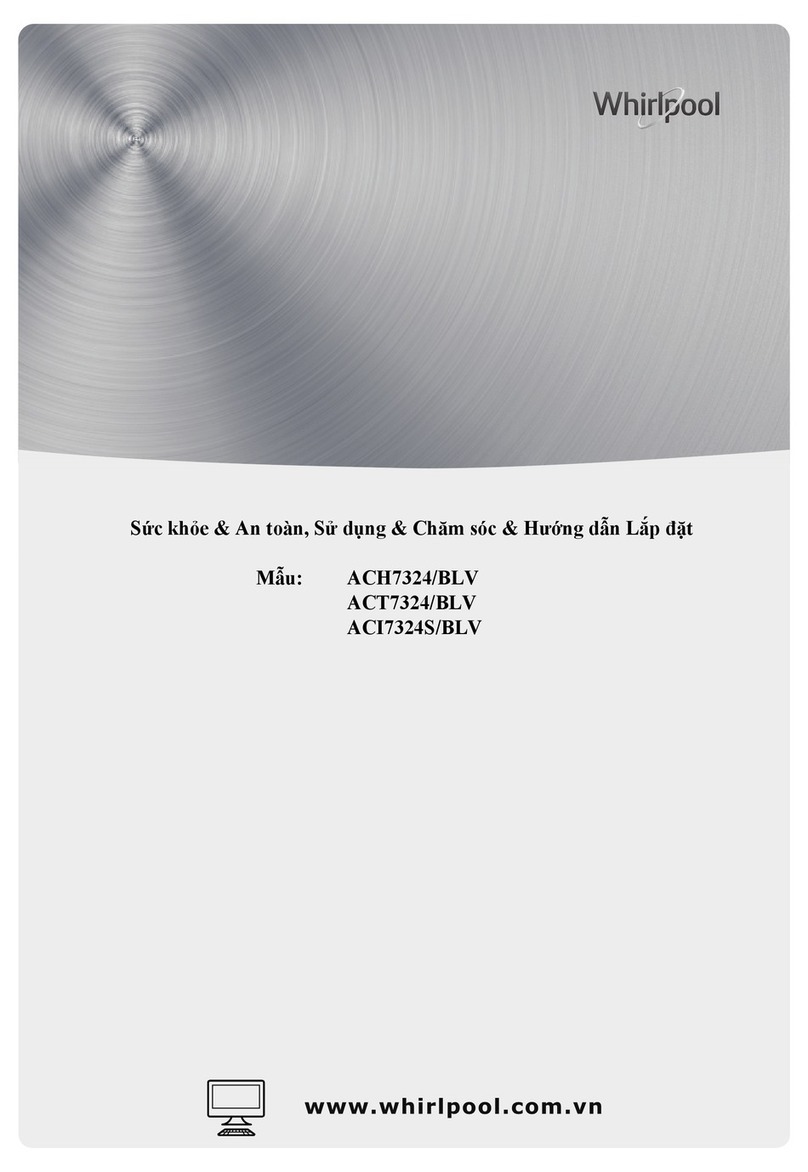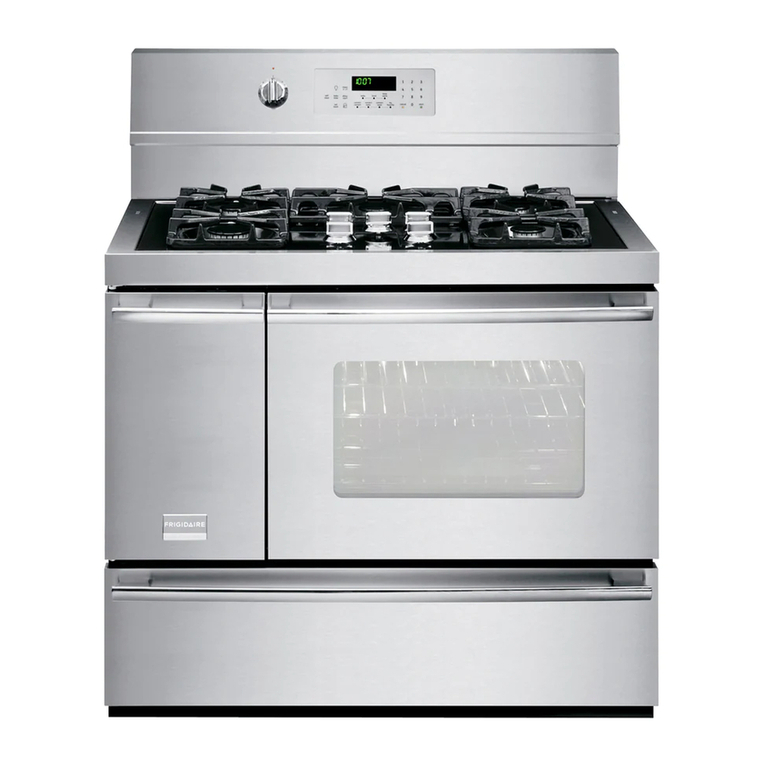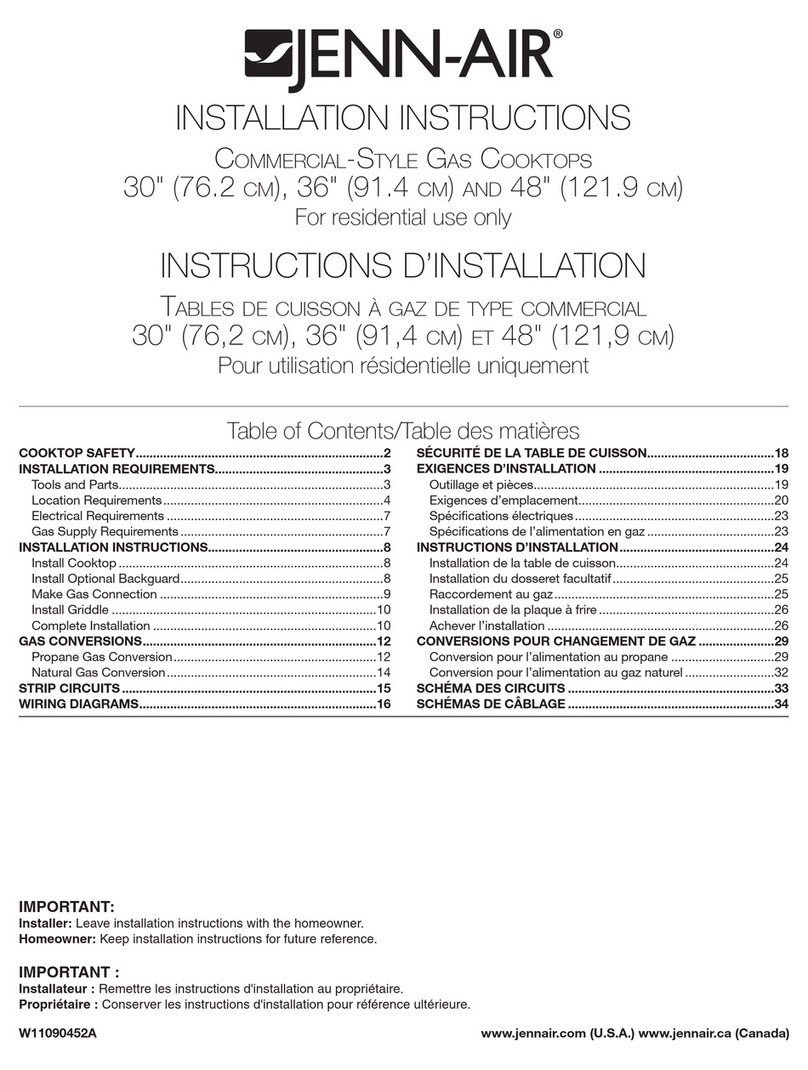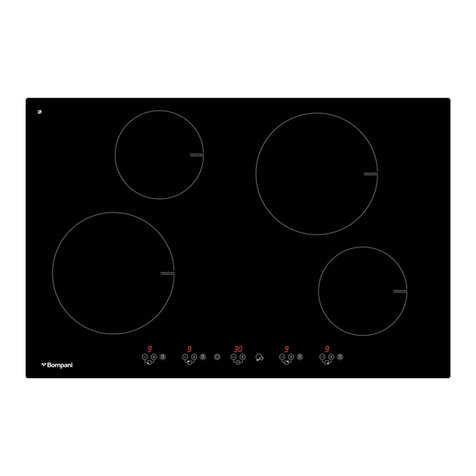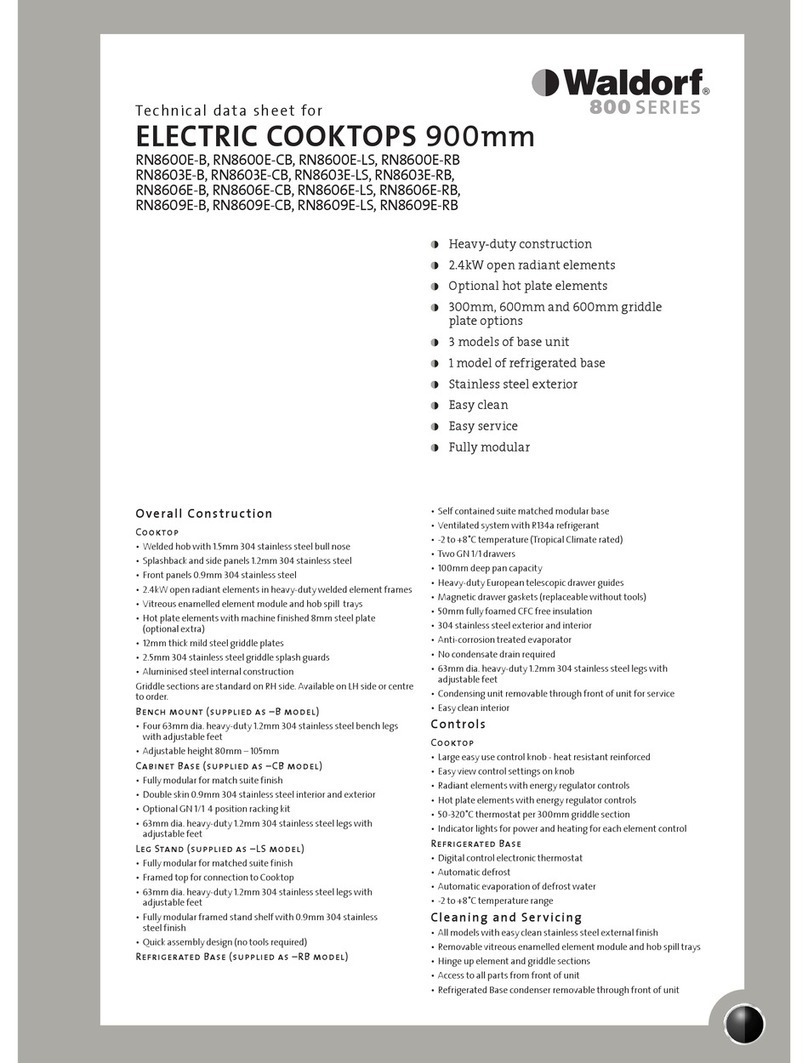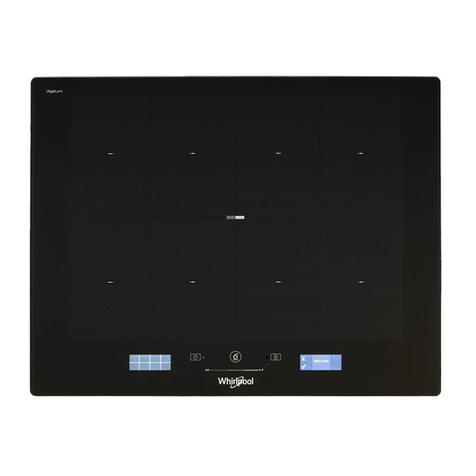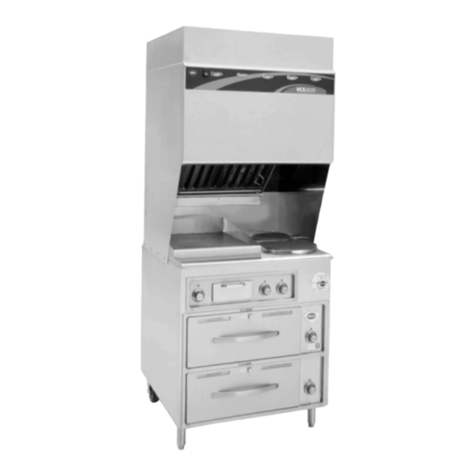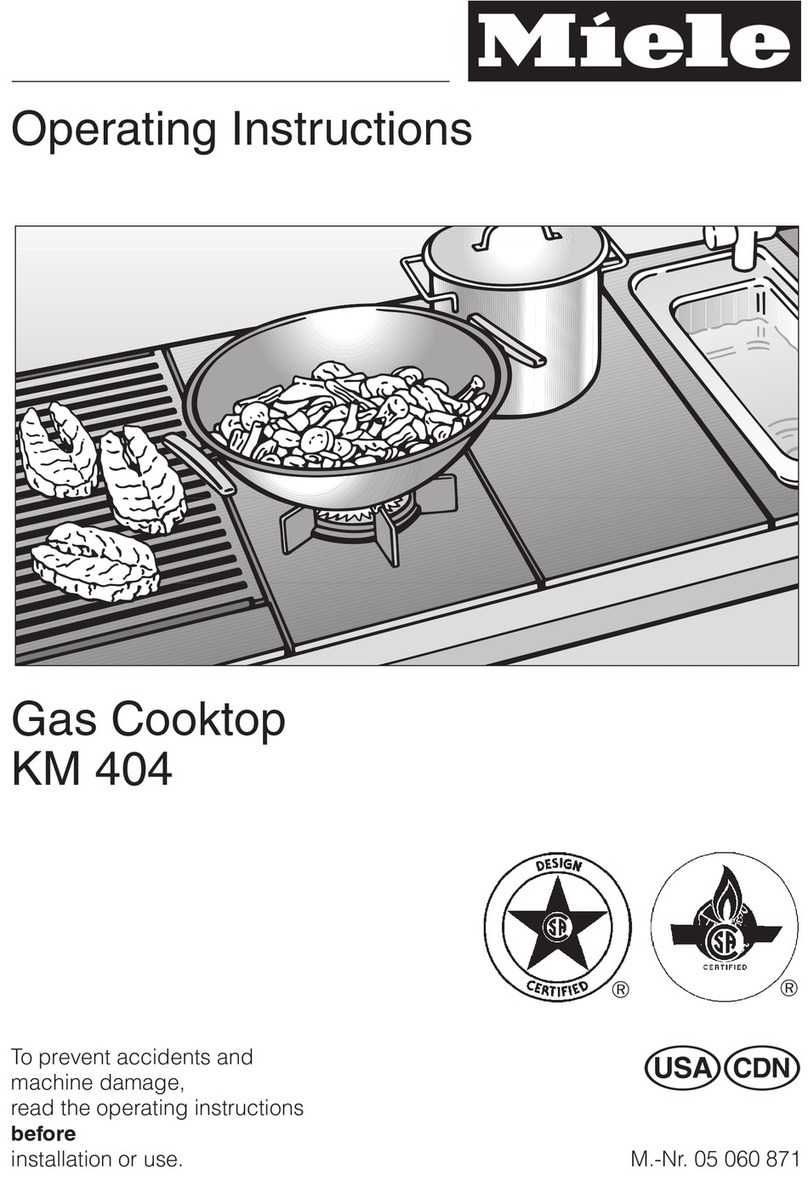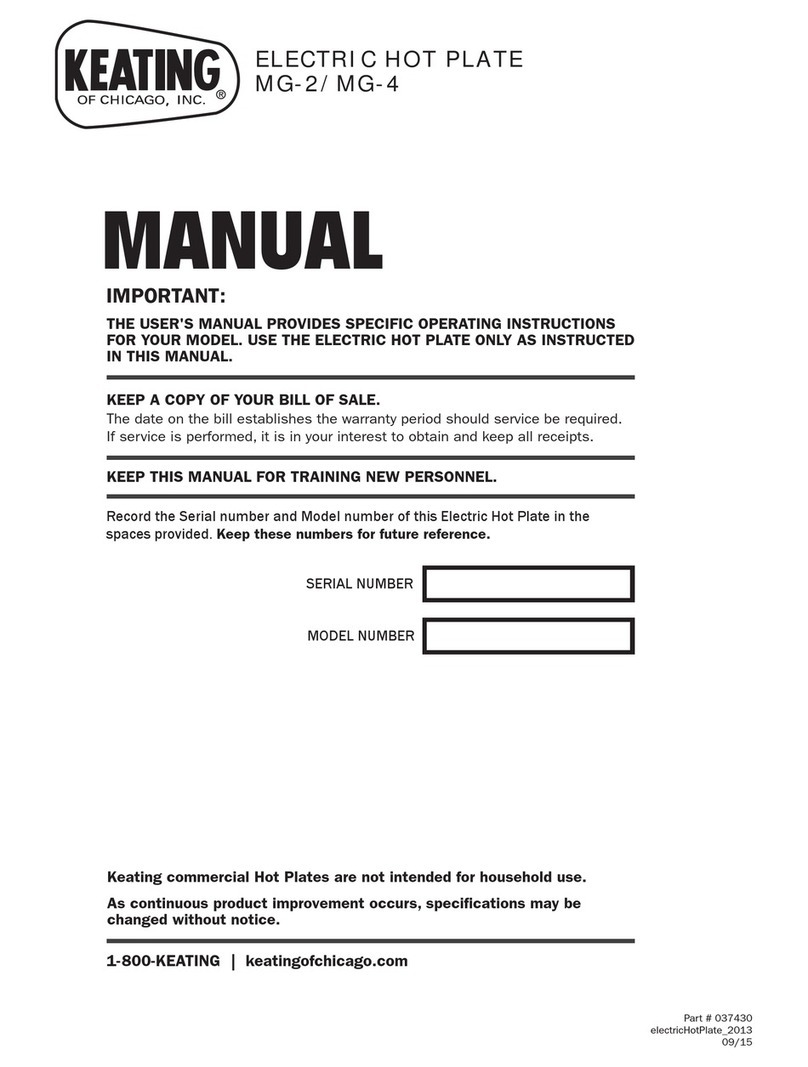2
Gas connection safety
• This cooker is a Class 2 Subclass 1 appliance.
• This appliance can be converted for use on another gas.
• Before installation, make sure that the cooker is suitable
for your gas type and supply voltage. See the data
badge.
• DO NOT use reconditioned or unauthorised gas
controls.
• Disconnect from the electricity and gas supply before
servicing.
• When servicing or replacing gas-carrying components
disconnect from the gas supply before starting
operation. Check the appliance is gas sound after
completion.
• Make sure that the gas supply is turned on and that the
cooker is wired in and switched on.
• In your own interest and that of safety, it is law that all
gas appliances be installed by a qualified person(s).
• An appliance for use on LPG must not be installed in
a room or internal space below ground level, e.g. in a
basement.
If you smell gas
• DO NOT turn electric switches on or off
• DO NOT smoke
• DO NOT use naked flames
• Turn off the gas at the meter or cylinder
• Open doors and windows to get rid of the gas
• Keep people away from the area affected
• Call your gas supplier
Peculiar smells
When you rst use your cooker it may give o an odour. This
should stop after use.
Before using for the rst time, make sure that all packing
materials have been removed and then, to dispel
manufacturing odours, turn the ovens to 200°C and run for at
least an hour.
Before using the grill for the rst time you should also turn on
the grill and run for 30 minutes with the grill pan in position,
pushed fully back and the grill door open.
Make sure the room is well ventilated to the outside air
(see‘Ventilation’below). People with respiratory or allergy
problems should vacate the area for this brief period.
Ventilation
The use of a cooking appliance results in the production
of heat and moisture in the room in which it is installed.
Therefore, make sure that the kitchen is well ventilated:
keep natural ventilation holes open or install a powered
cookerhood that vents outside. If you have several hotplates/
burners on, or use the cooker for a long time, open a window
or turn on an extractor fan
Maintenance
• It is recommended that this appliance is serviced
annually.
• DO NOT use cooking vessels on the hotplate that
overlap the edges.
• Unless specified otherwise in this guide, always allow
the cooker to cool and then switch it off at the mains
before cleaning or carrying out any maintenance work.
• DO NOT attempt to disassemble or clean around any
burner while another burner is on, otherwise an electric
shock could result.
• NEVER operate the cooker with wet hands.
• DO NOT use a towel or other bulky cloth in place of a
glove – it might catch fire if brought into contact with a
hot surface.
• DO NOT use hotplate protectors, foil or hotplate covers
of any description. These may affect the safe use of
your hotplate burners and are potentially hazardous to
health.
• NEVER heat unopened food containers. Pressure build
up may make the containers burst and cause injury.
• DO NOT use unstable saucepans. Always make sure that
you position the handles away from the edge of the
hotplate.
• NEVER leave the hotplate unattended at high heat
settings. Pans boiling over can cause smoking,
and greasy spills may catch on fire. Use a deep fat
thermometer whenever possible to prevent fat
overheating beyond the smoking point.
• Unattended cooking on a hob with fat or oil can be
dangerous and may result in fire.
• NEVER leave a chip pan unattended. Always heat fat
slowly, and watch as it heats. Deep fry pans should be
only one third full of fat.
• NEVER try to move a pan of hot fat, especially a deep
fat fryer. Wait until the fat is cool. Filling the pan too full
of fat can cause spill over when food is added. If you use
a combination of oils or fats in frying, stir them together
before heating, or as the fats melt.
• Foods for frying should be as dry as possible. Frost on

